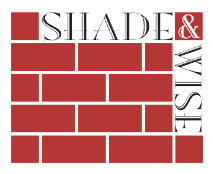SUSTAINABILITY & GREEN BUILDING DESIGN
Why Is Genuine Clay Brick the Most Sustainable, Green Building Material Made?
Energy-efficient brick is 100% recyclable, made from Earth’s natural resources, and durable enough to withstand the elements for decades.
Sustainable buildings are designed to be energy-efficient, water-efficient, and resource-efficient. Clay brick is able to withstand the effects of nature with minimal damage. Sustainable buildings are designed in a way that uses available resources efficiently and in a responsible manner, balancing environmental, societal and economic impacts to meet the design intents of today while considering future effects.
The materials below showcase more details about the sustainable attributes of the brick industry.
Clay Brick Vs. The Competition
There are reasons why there is a vibrant salvage market for brick, but not one for fiber cement, vinyl siding, and other synthetic materials. Unlike fake materials that are engineered and altered to look like something they’re not, brick is made from some of Earth’s most abundant and natural materials.
Brick is also the only building product that is 100% recyclable as it can be either salvaged and reinstalled on other buildings and homes, as they are built or are renovated. Clay brick can also be crushed for sub-base materials or chipped brick for permanent landscaping mulch.
Not only is brick low maintenance, but it has an unbeatable fire-rating and is durable enough to last generations. In high-wind events, homes built with brick offer dramatically more protection from wind-borne debris than homes built with vinyl or fiber cement siding.
Compare how sustainable clay brick stands up to the competition:
Sustainability Information For Industry Professionals
Learn more about the benefits of sustainable clay brick designs and ways that brick masonry walls and paving systems can be used toward earning points in the LEED and other green building rating systems by reading Technical Note 48 below.
Learn about a program where brick manufacturers can attain certification for the amount of recycled content in their brick products in our Brick Brief covering Recycled Content in Green Building Rating Systems below.
Green Building Ratings Systems and Standards
Brick is one of the few materials that building codes allow to be reused in a building application when it meets the ASTM standard for clay brick. Consequently, salvaged bricks are in high demand and represent a vibrant market. It is easy to see why brick makes such a compelling case for sustainability.
Of course, brick can help attain energy rating systems through things like LEED® (from the U.S. Green Building Council), ASHRAE 189.1 (Standard for the Design of High-Performance Green Buildings Except for Low-Rise Residential Buildings), and more.
However, these initiatives do not encapsulate the whole picture because most rating systems do not account for products that perform more than one function, are durable, last an extremely long time, and more.
Clay Brick Environmental Product Declaration (EPD)
In 2020, BIA launched an industry-wide clay brick Environmental Product Declaration (EPD). This EPD provides evidence of clay brick’s sustainable benefits and allows designers to further recognize clay brick’s role as a major element in sustainable design and construction.
For a list of participating brick manufacturers and more information, please see the full EPD here.
The information above is provided by The Brick Industry Association.
